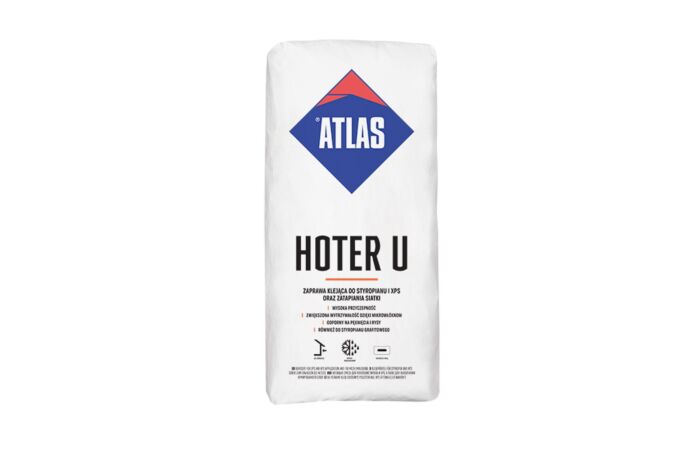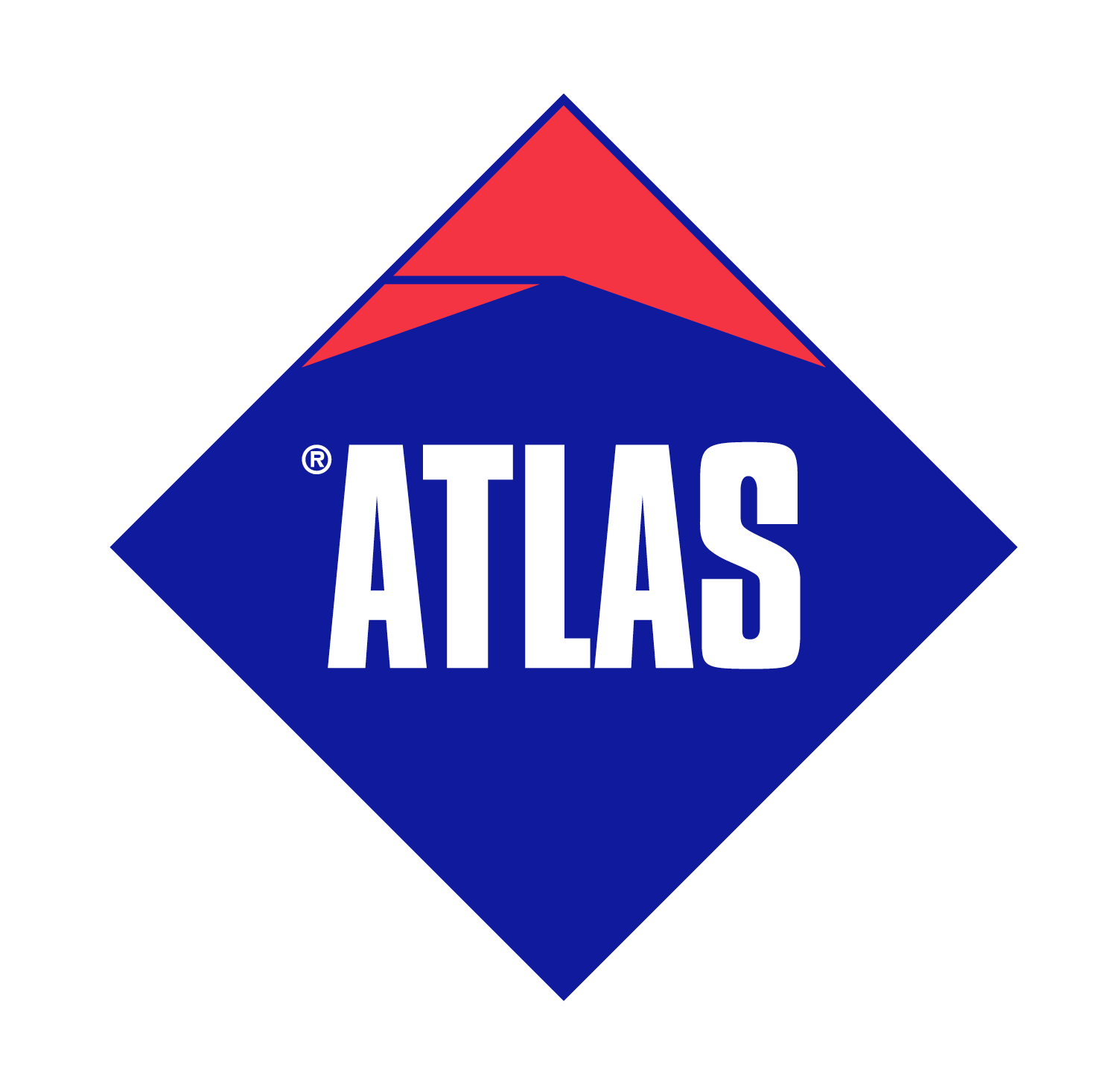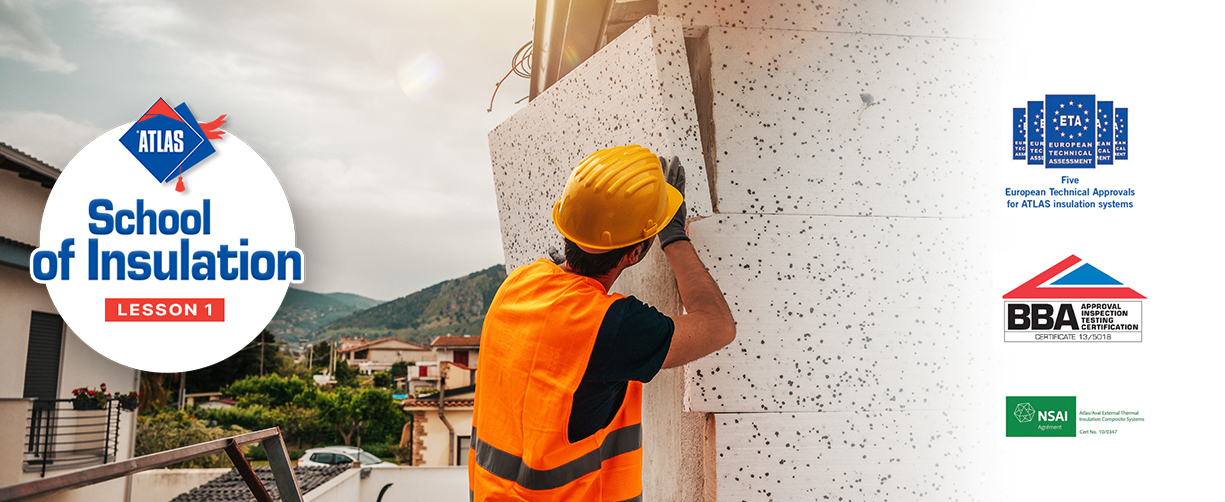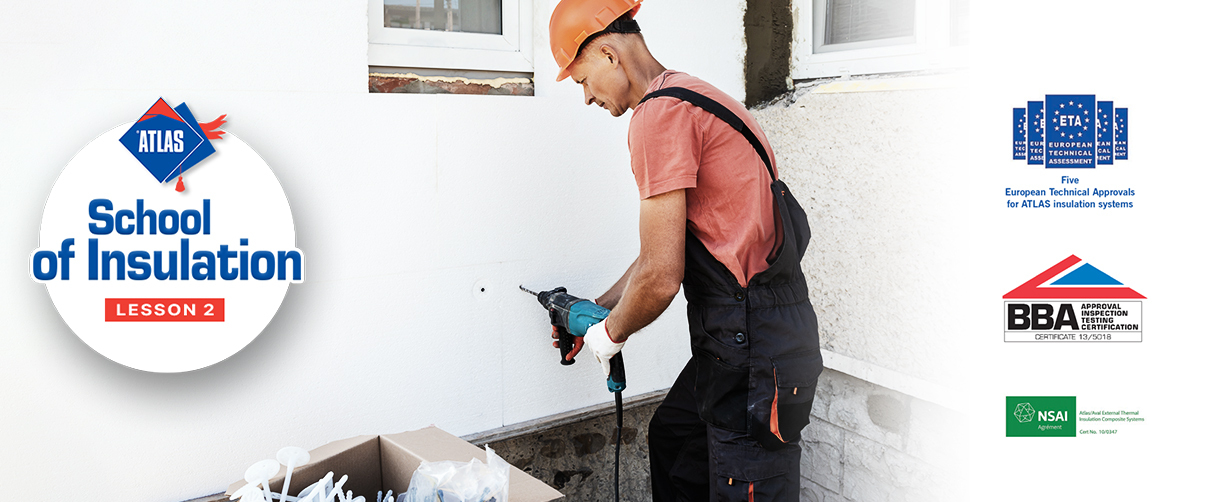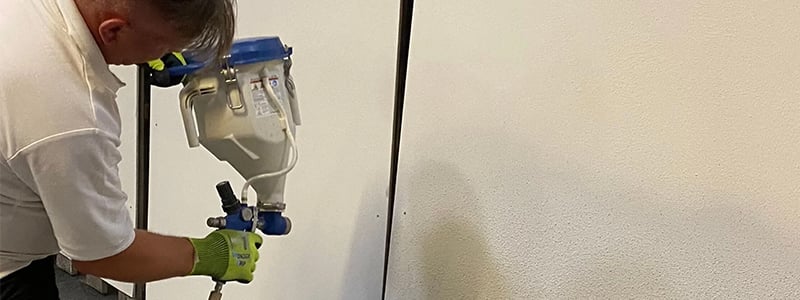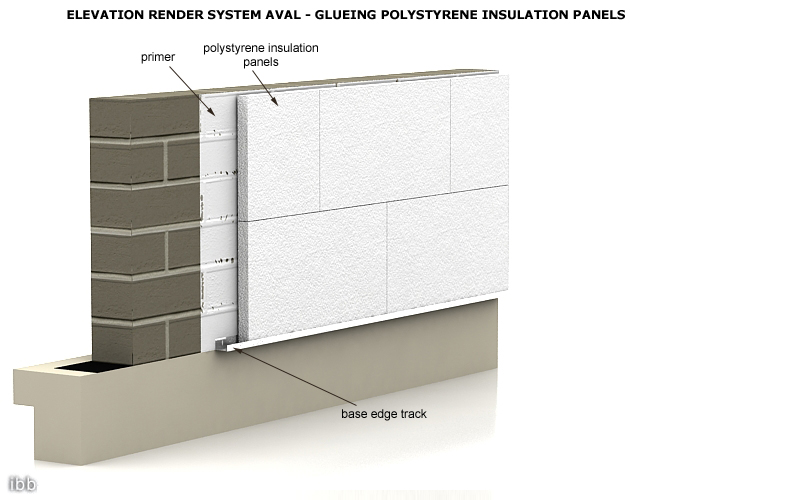ATLAS HOTER U - 2 in 1: basecoat adhesive for EPS, XPS application and for mesh embedding
Product description
2 in 1 – designed for fixing thermal insulation boards and for the reinforced layer (base coat) installation in the external thermal insulation of buildings.
Element of the thermal insulation systems – an element of composite thermal insulation systems, granted the European Technical Approval (ETA).
Main properties
high adhesiveness
good water vapour permeability
reinforced with microfibres
resistant to cracks and scratches
also for graphite - enhanced EPS
BBA Certificate
NSAI Certificate
Main parameters
base coat bed thickness: 2 - 5 mm
adhesion to concrete: min. 0.25 MPa
adhesion to expanded polystyrene: min. 0.08 MPa
consumption: boards application: from 4.0 to 5.0 kg/m²
consumption: base coat application: from 3.0 to 3.5 kg/m²
USE
2 in 1 – designed for fixing thermal insulation boards and for the reinforced layer (base coat) installation in the external thermal insulation of buildings.
Element of the thermal insulation systems – an element of composite thermal insulation systems, granted the European Technical Approval (ETA).
Enables fixing various expanded polystyrene boards – including graphite - enhanced and elasticized expanded polystyrene boards.
PROPERTIES
Flexible – compensates thermal and mechanical stress exerted on other layers of the system.
Increased resistance to cracking – it is reinforced with cellulose fibres.
High adhesion – strongly bonds to mineral substrates.
High water vapour permeability – does not restrict water vapour transmission through the insulated wall.
TECHNICAL REQUIREMENTS
HOTER U is an element of the ATLAS external thermal insulation system which has been given:
- the European Technical Approval no. 06/0187,
- the National Standard Authority of Ireland (NSAI) Certificate no. 10/0347,
- the British Board of Agreement (BBA) Certificate no. 13/5018.
APPLICATION Substrate preparation
The substrate should be frost-free, stable, flat and sound, i.e. sufficiently strong, cleaned of materials which might affect adhesion of mortar, especially dust, dirt, oil, grease, wax, residue of oil or emulsion paint. Before commencing repair work the substrate should be cleaned and — if excessively absorbent — primed with ATLAS UNI-GRUNT emulsion. Priming is also necessary in the case of substrates such as weaker cement or lime-cement plaster or walls of aerated concrete or hollow cinder blocks. Larger rough spots and holes should be filled with ATLAS LEVELLING MORTAR or ATLAS PLASTERING MORTAR.
Before the base coat application make sure the insulation boards are frost - free, flat, clean and dusted, if the panels were sanded after application. It is recommended to sand and dust the graphite - enhanced polystyrene boards before the base coat application.
Pour the mortar from the bag into a container with suitable amount of water (for proportions see Technical Data section) and mix until homogenous with a drill with a mixer. Leave the mortar to rest for 5 minutes and then remix. The ready to use adhesive must be used up within ca. 4 hours.
Apply HOTER U adhesive on the wall contacting side of the panel using the “strip - point” method. It consists in the application of continuous circumferential bead (at least 3 cm wide) at the edge of the board and 6÷8 patches of 8÷12 cm in diameter evenly distributed on the whole surface. In total, apply as much adhesive as sufficient to cover at least 40% of the surface of the board (after pressing down to the substrate, at least 60%) and to ensure appropriate binding of the board with the wall. Immediately after the application of the mortar on the board, fix the board to the substrate and strike it to place it in the required position, so that the mortar thickness under the board does not exceed 1 cm. In case of even and smooth substrates, the mortar can be evenly distributed with a notched trowel on the whole surface of the board to ensure 2÷5 mm of adhesive layer after fixing.
The base coat can be installed once the adhesive mortar used for board application has sufficiently set and any necessary additional mechanical fixings have been installed (after three days on average). Apply adhesive mortar to the surface of the installed insulation boards, spread it using a notched trowel and embed fiberglass mesh in the adhesive layer. It is recommended to apply the mesh in vertical strips and float the adhesive smooth over the mesh so it is not visible and does not contact the EPS boards directly.
It is possible to start rendering when the weather conditions are as specified in Technical Data Sheets for thin-coat renders, but no earlier than 3 days after the application of the base coat.
CONSUMPTION
Individual consumption of the adhesive depends on the properties of the substrate Boards application: from 4.0 to 5.0 kg/m².
Basecoat application: from 3.0 to 3.5 kg/m².
![EPS Basecoat Adhesive ATLAS GRAWIS U grey 25kg]() EPS Basecoat Adhesive ATLAS GRAWIS U grey 25kg£15.50 / bag £12.92 / bag£13.28 / bag£11.07 / bagOrder onlyDispatch within: 7 days.
EPS Basecoat Adhesive ATLAS GRAWIS U grey 25kg£15.50 / bag £12.92 / bag£13.28 / bag£11.07 / bagOrder onlyDispatch within: 7 days.




